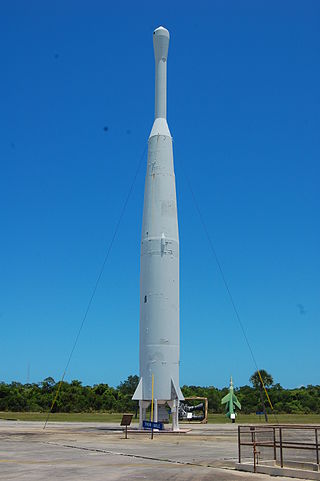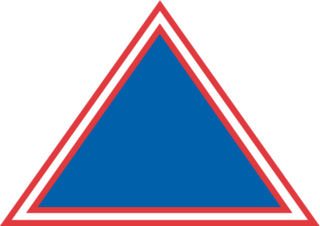
A geosynchronous orbit is an Earth-centered orbit with an orbital period that matches Earth's rotation on its axis,23 hours,56 minutes,and 4 seconds. The synchronization of rotation and orbital period means that,for an observer on Earth's surface,an object in geosynchronous orbit returns to exactly the same position in the sky after a period of one sidereal day. Over the course of a day,the object's position in the sky may remain still or trace out a path,typically in a figure-8 form,whose precise characteristics depend on the orbit's inclination and eccentricity. A circular geosynchronous orbit has a constant altitude of 35,786 km (22,236 mi).
Syncom started as a 1961 NASA program for active geosynchronous communication satellites,all of which were developed and manufactured by the Space and Communications division of Hughes Aircraft Company. Syncom 2,launched in 1963,was the world's first geosynchronous communications satellite. Syncom 3,launched in 1964,was the world's first geostationary satellite.

The RM-81 Agena was an American rocket upper stage and satellite bus which was developed by Lockheed Corporation initially for the canceled WS-117L reconnaissance satellite program. Following the division of WS-117L into SAMOS and Corona for image intelligence,and MIDAS for early warning,the Agena was later used as an upper stage,and an integrated component,for several programs,including Corona reconnaissance satellites and the Agena Target Vehicle used to demonstrate rendezvous and docking during Project Gemini. It was used as an upper stage on the Atlas,Thor,Thorad and Titan IIIB rockets,and considered for others including the Space Shuttle and Atlas V. A total of 365 Agena rockets were launched between February 28,1959 and February 1987. Only 33 Agenas carried NASA payloads and the vast majority were for DoD programs.

The Relay program consisted of Relay 1 and Relay 2,two early American satellites in elliptical medium Earth orbit. Both were primarily experimental communications satellites funded by NASA and developed by RCA. As of December 2,2016,both satellites were still in orbit. Relay 1 provided the first American television transmissions across the Pacific Ocean.

Delta II was an expendable launch system,originally designed and built by McDonnell Douglas,and sometimes known as the Thorad Delta 1. Delta II was part of the Delta rocket family,derived directly from the Delta 3000,and entered service in 1989. There were two main variants,the Delta 6000 and Delta 7000,with the latter also having "Light" and "Heavy" subvariants. During its career,Delta II flew several notable payloads,including 24 Global Positioning System (GPS) Block II satellites,several dozen NASA payloads,and 60 Iridium communication satellites. The rocket flew its final mission,ICESat-2,on 15 September 2018,earning the launch vehicle a streak of 100 successful missions in a row,with the last failure being GPS IIR-1 in 1997. In the late 1990s,Delta II was developed further into the unsuccessful Delta III,which was in turn developed into the more capable and successful Delta IV,though the latter shares little heritage with the original Thor and Delta rockets.

The Delta rocket family was a versatile range of American rocket-powered expendable launch systems that provided space launch capability in the United States from 1960 to 2024. Japan also launched license-built derivatives from 1975 to 1992. More than 300 Delta rockets were launched with a 95% success rate. The series was phased out in favor of the Vulcan Centaur,with the Delta IV Heavy rocket's last launch occurring on April 9,2024.

The Thor-Able was an American expendable launch system and sounding rocket used for a series of re-entry vehicle tests and satellite launches between 1958 and 1960.

Thor-Agena was a series of orbital launch vehicles. The launch vehicles used the Douglas-built Thor first stage and the Lockheed-built Agena second stages. They are thus cousins of the more-famous Thor-Deltas,which founded the Delta rocket family. The first attempted launch of a Thor-Agena was in January 1959. The first successful launch was on 28 February 1959,launching Discoverer 1. It was the first two-stage launch vehicle to place a satellite into orbit.

A geosynchronous satellite is a satellite in geosynchronous orbit,with an orbital period the same as the Earth's rotation period. Such a satellite returns to the same position in the sky after each sidereal day,and over the course of a day traces out a path in the sky that is typically some form of analemma. A special case of geosynchronous satellite is the geostationary satellite,which has a geostationary orbit –a circular geosynchronous orbit directly above the Earth's equator. Another type of geosynchronous orbit used by satellites is the Tundra elliptical orbit.

The Delta IV Heavy was an expendable heavy-lift launch vehicle,the largest type of the Delta IV family. It was the world's third highest-capacity launch vehicle in operation at the time of its retirement in 2024,behind NASA's Space Launch System and SpaceX's Falcon Heavy and closely followed by CASC's Long March 5. It was manufactured by United Launch Alliance (ULA) and was first launched in 2004. ULA retired the Delta IV Heavy in 2024. Future ULA launches will use the new Vulcan Centaur rocket. Delta IV's final flight was on 9 April 2024.

The Commercial Titan III,also known as CT-3 or CT-III,was an American expendable launch system,developed by Martin Marietta during the late 1980s and flown four times during the early 1990s. It was derived from the Titan 34D,and was originally proposed as a medium-lift expendable launch system for the US Air Force,who selected the Delta II instead. Development was continued as a commercial launch system,and the first rocket flew in 1990. Due to higher costs than contemporary rockets such as the Ariane 4,orders were not forthcoming,and the CT-3 was retired in 1992.

The Thor-Delta,also known as Delta DM-19 or just Delta was an early American expendable launch system used for 12 orbital launches in the early 1960s. A derivative of the Thor-Able,it was a member of the Thor family of rockets,and the first member of the Delta family.

The Delta D,Thrust Augmented Delta or Thor-Delta D was an American expendable launch system used to launch two communications satellites in 1964 and 1965. It was derived from the Delta C,and was a member of the Delta family of rockets.

The Delta L,Thor-Delta L,or Thrust-Augmented Long Tank Thor-Delta was a US expendable launch system used to launch the Pioneer E and TETR satellites in 1969 (failed) and HEOS satellite in 1972. It was a member of the Delta family of rockets.

The Delta M or Thor-Delta M was an American expendable launch system used for thirteen orbital launches between 1968 and 1971. It was a member of the Delta family of rockets.

The Delta 3000 series was an American expendable launch system which was used to conduct 38 orbital launches between 1975 and 1989. It was a member of the Delta family of rockets. Several variants existed,which were differentiated by a four digit numerical code.
The Delta 4000 series was an American expendable launch system which was used to conduct two orbital launches in 1989 and 1990. It was a member of the Delta family of rockets. Although several variants were put forward,only the Delta 4925 was launched. The designations used a four digit numerical code to store information on the configuration of the rocket. It was built from a combination of spare parts left over from earlier Delta rockets,which were being retired,and parts from the Delta II 6000-series,which was just entering service.

Telstar is the name of various communications satellites. The first two Telstar satellites were experimental and nearly identical. Telstar 1 launched on top of a Thor-Delta rocket on July 10,1962. It successfully relayed through space the first television pictures,telephone calls,and telegraph images,and provided the first live transatlantic television feed. Telstar 2 was launched May 7,1963. Telstar 1 and 2—though no longer functional—still orbit the Earth.

A small-lift launch vehicle is a rocket orbital launch vehicle that is capable of lifting 2,000 kg (4,400 lb) or less or under 5,000 kilograms (11,000 lb) of payload into low Earth orbit (LEO). The next larger category consists of medium-lift launch vehicles.


















